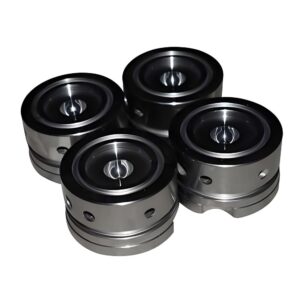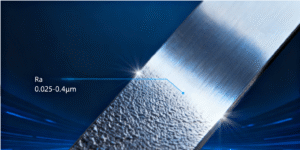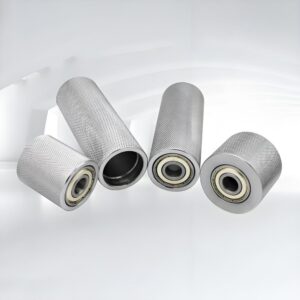In the world of machining and manufacturing, choosing the right material is critical to a project’s success. Two of the most widely used materials are carbon steel and stainless steel, each offering unique properties that cater to different needs. At Precionn, a trusted leader in the machining industry with a strong online presence, we specialize in working with both types of steel to deliver high-quality solutions. This blog explores the differences and similarities between carbon steel and stainless steel, covering their chemical and mechanical properties, applications, and more. By understanding these materials, you can make informed decisions for your projects, and Precionn is here to guide you every step of the way.
What is Carbon Steel?

Carbon steel is an alloy primarily composed of iron and carbon, with carbon content ranging from 0.05% to 2.0%. It’s a cornerstone material in industries like construction, automotive, and machinery due to its strength, durability, and affordability. Carbon steel is categorized into three types based on carbon content:
- Low-carbon steel (mild steel, up to 0.3% carbon): Highly ductile, easy to weld, and ideal for structural applications.
- Medium-carbon steel (0.3%–0.6% carbon): Balances strength and ductility, used in gears and shafts.
- High-carbon steel (0.6%–2.0% carbon): Extremely hard and wear-resistant, perfect for tools and springs but less ductile.
Its versatility makes carbon steel a go-to choice for cost-effective, high-strength applications, though it requires protection against corrosion.
What is Stainless Steel?
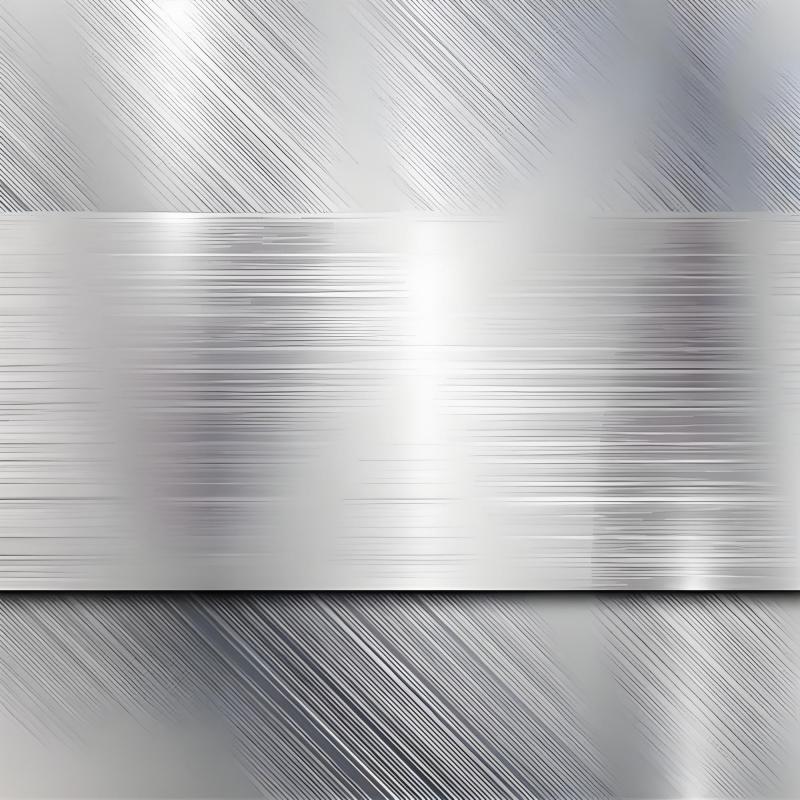
Stainless steel is an iron-based alloy containing at least 10.5% chromium, which provides its signature corrosion resistance. Additional elements like nickel, molybdenum, and titanium enhance its strength, durability, and resistance to heat and chemicals. Stainless steel comes in various grades, each tailored for specific uses:
- Austenitic (e.g., 304, 316): Non-magnetic, highly corrosion-resistant, used in kitchenware and medical instruments.
- Ferritic: Magnetic, used in automotive exhaust systems.
- Martensitic (e.g., 17-4 PH): High strength, used in high-wear applications but harder to machine.
Stainless steel’s ability to resist rust and maintain a polished appearance makes it ideal for demanding environments.
Chemical Properties of Carbon Steel vs Stainless Steel
Composition
The key difference between carbon steel and stainless steel lies in their composition. Carbon steel is primarily iron and carbon, with small amounts of manganese, silicon, and copper. Its properties vary based on carbon content, with higher carbon increasing hardness but reducing ductility. Stainless steel, however, includes at least 10.5% chromium, which forms a protective oxide layer. Additional elements like nickel and molybdenum further enhance its corrosion resistance and strength. This compositional difference is what sets stainless steel apart in harsh environments.
Corrosion Resistance
Stainless steel’s chromium content creates a passive layer of chromium oxide, making it up to 200 times more corrosion-resistant than carbon steel, according to industry sources. This layer prevents rust by blocking oxygen and moisture from reaching the iron. Carbon steel, lacking this layer, is prone to oxidation and rust, especially in moist or salty conditions. High-carbon steel offers slightly better corrosion resistance than low-carbon steel but still falls short of stainless steel’s performance.
Reactivity to Chemicals
Stainless steel’s passive layer also makes it less reactive to acids, alkalis, and other chemicals, making it ideal for chemical processing plants and food industries. Carbon steel, being more reactive, may corrode when exposed to such substances unless protected by coatings. This makes stainless steel the preferred choice for applications requiring chemical stability.
Mechanical Properties of carbon vs stainless steel
Durability
Carbon steel, particularly high-carbon variants, is renowned for its strength and hardness. For example, high-carbon steel (AISI 1080) can have a tensile strength of 140,000 psi, compared to 65,300 psi for low-carbon steel (AISI 1020). Stainless steel, while generally strong, varies by grade. Austenitic stainless steel offers good toughness, while martensitic grades can match or exceed high-carbon steel’s strength. Carbon steel’s durability makes it ideal for high-stress applications, while stainless steel’s corrosion resistance ensures longevity in harsh conditions.
Thermal Conductivity
Carbon steel has higher thermal conductivity (40–70 W/mK) than stainless steel (15 W/mK), meaning it transfers heat more efficiently. This makes carbon steel suitable for applications like cookware or heat exchangers where rapid heating is needed. Stainless steel’s lower conductivity is advantageous for applications requiring even heat distribution, such as ovens or grills.
Melting Point
Both steels have similar melting points, with carbon steel ranging from 1425°C to 1540°C and stainless steel from 1400°C to 1450°C, depending on the grade. This similarity makes both suitable for high-temperature manufacturing processes like casting and welding, though specific grades may require tailored techniques.
Weldability
Carbon steel, especially low-carbon varieties, is easier to weld due to its simpler composition and lack of oxide layers that cause defects. High-carbon steel, however, can be prone to cracking during welding. Stainless steel, particularly austenitic grades, is weldable but requires careful techniques to avoid sensitization or intergranular corrosion. Welding carbon steel to stainless steel is challenging due to differences in thermal expansion and conductivity, often requiring specialized methods.
Machinability
Low-carbon steel is highly machinable due to its softness and ductility, making it a favorite in machining shops. High-carbon steel, being harder, is more difficult to machine and requires robust tools. Austenitic stainless steel is relatively easy to machine but can work-harden, necessitating adjustments in cutting speed. Martensitic stainless steel, with its high hardness, has low machinability, often making 3D printing a more efficient option. Precionn’s expertise ensures optimal machining for both materials.
Magnetism
Most carbon steels are ferromagnetic, making them suitable for applications involving magnetic fields, like motors or transformers. Stainless steel’s magnetism depends on its grade: ferritic and martensitic grades are magnetic, while austenitic grades are non-magnetic, which is critical for applications like medical devices or electronics.
Other Comparisons of Carbon Steel vs Stainless Steel
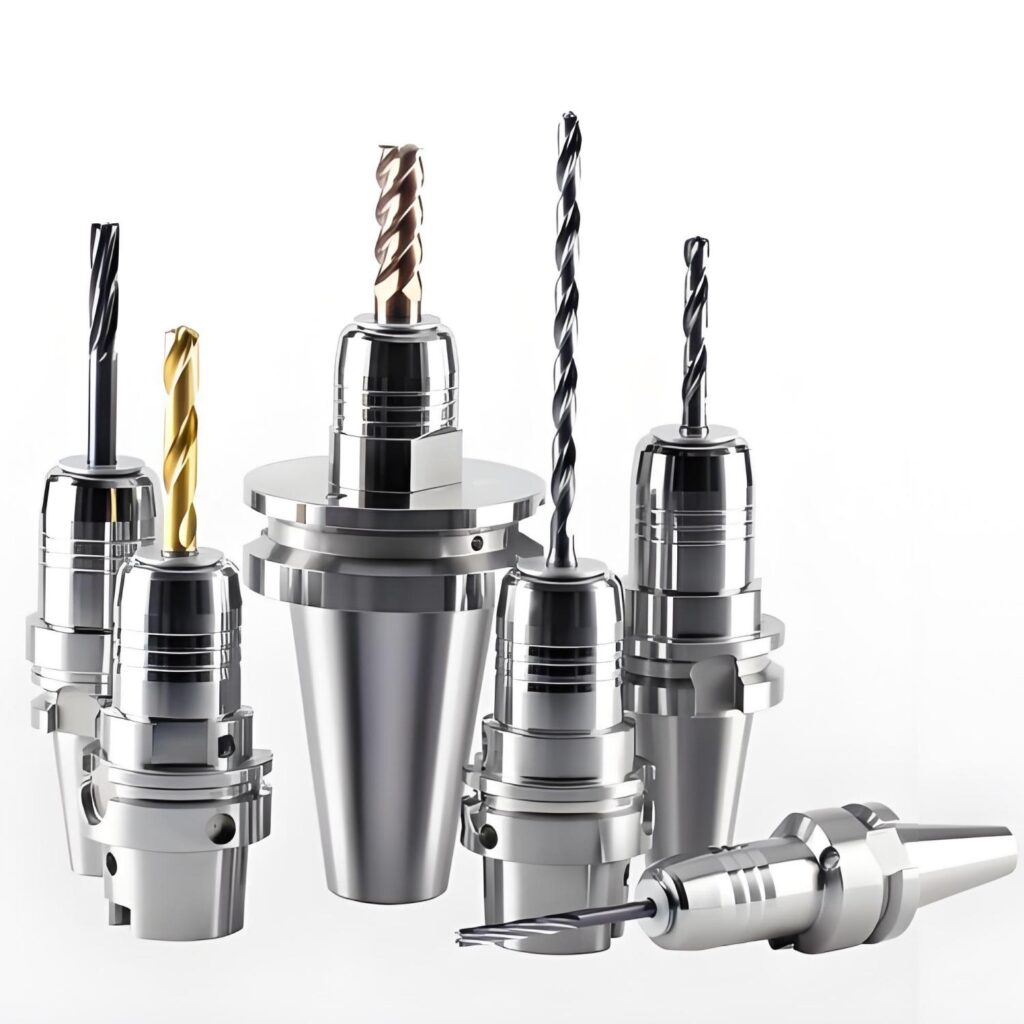
Cost
Carbon steel is generally more affordable than stainless steel due to its simpler composition and lower production costs. For example, carbon steel drums cost around $120, while stainless steel drums average $850. However, stainless steel’s durability can offset its higher initial cost by reducing maintenance and replacement expenses, especially in corrosive environments.
Appearance
Carbon steel, when untreated, develops a reddish-brown patina due to rust, which can be desirable for industrial or vintage aesthetics. Stainless steel maintains a bright, polished finish, making it popular for modern designs in architecture, appliances, and automotive trim.
Weight
Both steels have similar densities, with carbon steel at 7.85 g/cm³ and stainless steel at 7.9–8.0 g/cm³. The slight difference is negligible in most applications, where strength and corrosion resistance are more critical factors.
Maintenance
Carbon steel requires regular maintenance, such as painting or coating, to prevent rust, especially in outdoor or humid environments. Stainless steel, with its corrosion-resistant layer, needs minimal upkeep—simple cleaning with soap and water is often sufficient. This makes stainless steel ideal for applications with limited maintenance access.
Environmental Impact
The environmental impact of carbon steel and stainless steel involves several factors:
| Aspect | Carbon Steel | Stainless Steel |
|---|---|---|
| Carbon Footprint | Smaller initial footprint due to lower energy use | Higher initial footprint due to alloying elements |
| Energy Consumption | Lower energy in production | Higher energy due to chromium and nickel |
| Durability and Lifespan | Shorter lifespan, needs frequent replacements | Longer lifespan, reduces replacement needs |
| Recyclability | Highly recyclable, may alter with coatings | Highly recyclable, no quality loss, 90% reused |
| Overall Impact | Higher long-term impact due to replacements | Lower lifecycle impact in corrosive settings |
Carbon steel’s production emits less CO2 (1.85 tons per tonne of steel, per McKinsey), but its shorter lifespan increases its long-term impact. Stainless steel’s higher initial energy use is offset by its durability and recyclability, with up to 90% of products reused without quality loss.
Applications of Carbon Steel vs Stainless Steel
The choice of steel depends on the application’s requirements:
- Carbon Steel Applications:
- Construction: Beams, rebar, pipes.
- Automotive: Chassis, engine parts.
- Tools and Machinery: Drills, gears, shafts.
- Oil and Gas: Pipelines, tanks.
- Railways: Rails, wheels.
- Stainless Steel Applications:
- Kitchenware: Pots, pans, sinks.
- Medical Instruments: Scalpels, implants.
- Architecture: Facades, handrails.
- Automotive: Exhaust systems, trim.
- Food and Beverage: Processing equipment, vats.
- Chemical Processing: Reactors, piping.
Commonalities Between Carbon Steel and Stainless Steel
Despite their differences, both steels share key traits:
- Both are iron-based alloys with carbon.
- Both can be heat-treated to adjust properties like hardness.
- Both are widely used in manufacturing and construction.
- Both are recyclable, supporting sustainable practices.
- Both can be machined and welded, though techniques vary.
These commonalities allow flexibility in manufacturing processes, with Precionn’s expertise ensuring optimal results.
So Which Metal is Best for Your Needs?
Choosing between carbon steel and stainless steel depends on your project’s needs:
- Corrosion Resistance: Stainless steel excels in wet or chemical environments.
- Strength: High-carbon steel offers superior hardness for high-wear applications.
- Cost: Carbon steel is more budget-friendly upfront.
- Appearance: Stainless steel suits sleek, modern designs; carbon steel fits rustic aesthetics.
- Maintenance: Stainless steel requires less upkeep.
Precionn’s team can assess your project’s needs, recommending the best steel to balance performance, cost, and durability.
Conclusion
Carbon steel and stainless steel are indispensable in machining, each offering unique strengths. Carbon steel’s affordability and strength make it ideal for structural and industrial uses, while stainless steel’s corrosion resistance and low maintenance suit harsh environments. By understanding their properties—chemical, mechanical, and environmental—you can make informed decisions. At Precionn, we leverage our machining expertise to deliver tailored solutions, ensuring your project succeeds with the right material. Contact us today to explore how we can support your next project.


